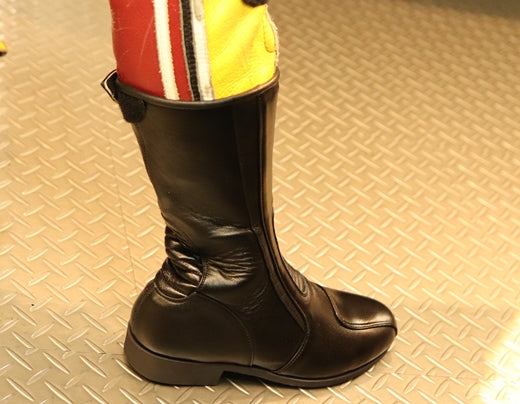
boot in story
I would like to talk about boot-in processing, which is common in custom repairs.
What is Boot-in explained here?
Let's say ``tuck the hem of your pants into your boots.''

First of all, in order to add a hem around the tube of the boots, a certain amount of tension is required.
If the yutori is large, it may be OK to some extent without modifying the pants,
For boots that don't have a lot of texture, drastic customization is required.
This time, let's assume that you have customized the pants to match our RD boots.

The hem of the pants must be stored neatly in the narrow boots, so
It is better to have a tight fit around the ankle.
The most common measurement is the ankle measurement plus 1 inch (approximately 2.5 cm).
The length is just above the ankle when seated, so cut it.

The area around the ankle is tight, so a zipper is required at the hem.
Due to the structure of the human body, I think the best location for the zipper is between the ankle and the Achilles tendon.
If the boots have zippers, make sure the zippers are not close together.
You can choose between inside or outside.
Boots put pressure on the ankle area, so
We recommend coil zips, which are thinner than metal and have fewer edges.
In addition, the edge that covers the zipper (hides the bug),
I want to minimize the wind damage between the zip and the skin, so
We recommend a raw-cut version that takes advantage of the characteristics of the leather.

Above, I briefly introduced one example.
The pants you wear, the boots you wear, how you want to look, etc.
This may vary depending on the case, so
If you have any requests, please contact your nearest directly managed store.